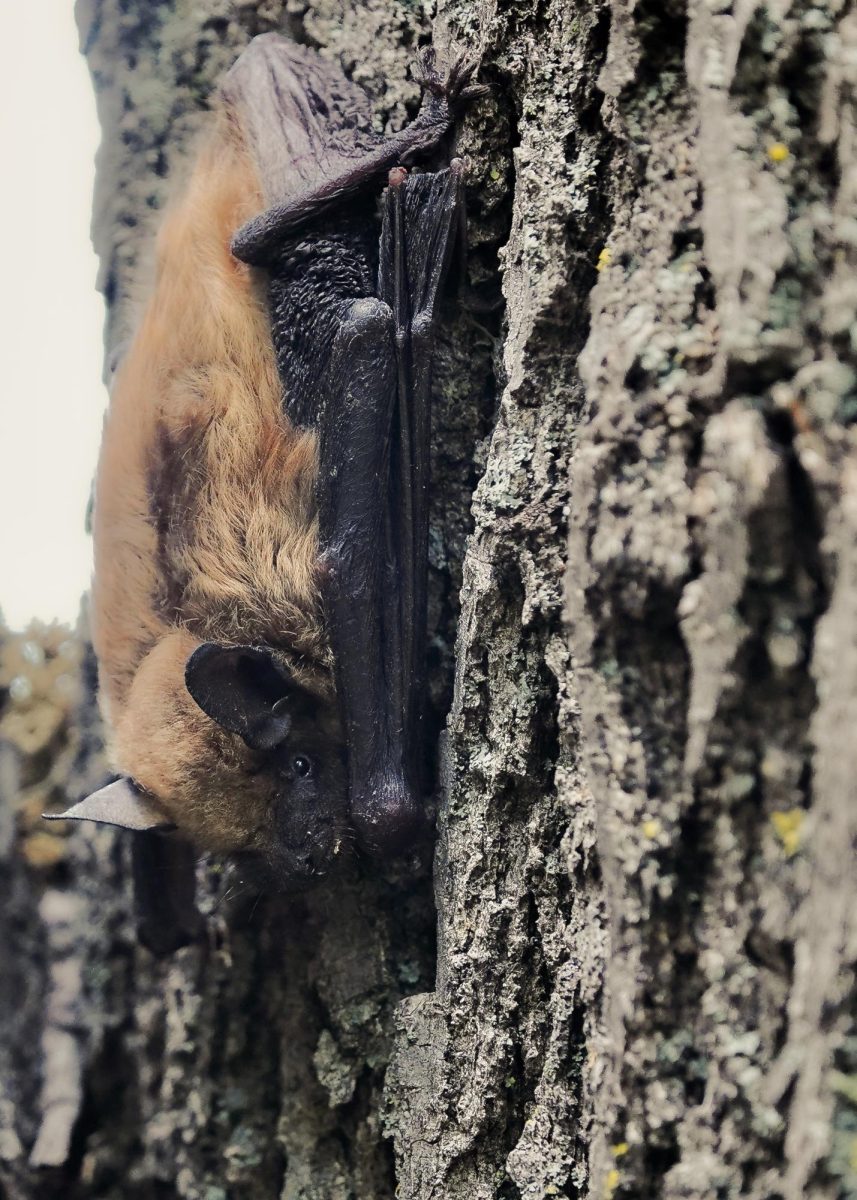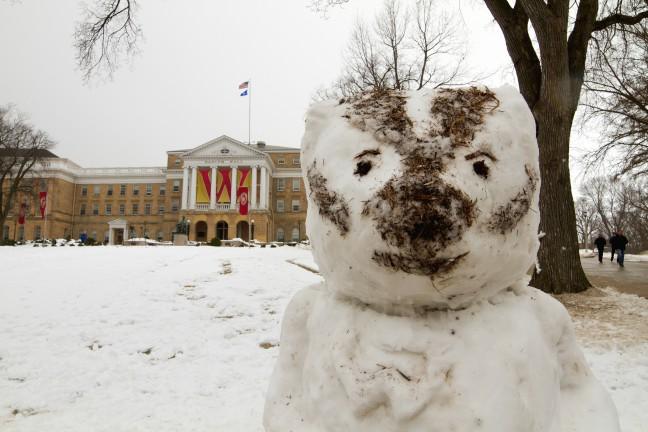In the past decade, the fungal disease known as white nose syndrome has decimated bat populations in Wisconsin and across the country. March 22, University of Wisconsin researchers, in collaboration with the U.S. Fish and Wildlife Service and the U.S Geological Survey, announced they received a grant to continue exploring interventions to prevent the disease.
The grant is a result of a partnership between the National Science Foundation and the Paul G. Allen Family Foundation. Researchers will study the effectiveness of an FDA-approved drug and a vaccine candidate for the fungus that causes white nose syndrome, known as Pseudogymnoascus destructans or Pd, according to UW professor Dr. Bruce Klein.
White nose syndrome doesn’t affect all bat species in the same way, but it is particularly common in cave bats. This type of bat spends the winters hibernating in caves and abandoned mines. The fungus that causes white nose syndrome thrives in these cool, damp environments that bats depend on each winter. White nose syndrome then infects bats either through the cave or through another bat, Department of Natural Resources Bat Team Lead Paul White said.
UW researchers show one-time reseeding of damaged pine savannah helps restore biodiversity
When a bat becomes infected during their hibernation, the fungal spores begin to grow on the bat’s skin. White nose syndrome then invades the bat’s skin and causes lesions, National Wildlife Health Center research epidemiologist Tonie Rocke said.
“[White nose syndrome] first hit Wisconsin in 2014, so our bats are quite naive to this disease,” Rocke said. “They’re very much affected by it.”
White nose syndrome also causes behavioral changes in the bats, which are often fatal. Normally, cave bats spend six to eight months of the year underground. Infected bats wake up from hibernation earlier and with greater frequency. White said early in the disease progression, bats wake up every three to five days instead of the normal 15 to 20 day cycle.
This accelerated cycle causes the bats to burn up the fat reserves they built up over the summer. The bats also leave their hibernation caves, which maintain a warmer, steadier temperature through the winter. When the bats leave their cave, White said they’re often killed by hawks and other predators or extreme cold temperatures.
City of Madison to comply with first ever national PFAS regulations on drinking water
White nose syndrome has certainly left its mark on Wisconsin’s bats. The U.S. Fish and Wildlife Service reclassified the northern long-eared bat, one of eight bat species native to Wisconsin, as an endangered species in November 2022. According to the Wisconsin DNR, the three other cave bat species present in Wisconsin are threatened.
“We visited nearly 50 underground sites this year, and we found one long-eared bat,” White said. “And many of these sites previously had northern long-eared bats, maybe not large populations, but we would always find at least one pre-white nose syndrome.”
White nose syndrome is widespread in Wisconsin. While bats have started to develop some coping mechanisms against the disease, it’s still important to stop the spread. People shouldn’t enter caves where bats are hibernating during the winter months. When traveling between sites where bats hibernate, people shouldn’t wear the same clothes or use the same equipment, White said.
While stopping the spread is important, researchers are also developing a vaccine against white nose syndrome. Klein didn’t set out to find a cure, but his lab was studying a different fungus that causes blastomycosis, a rare disease that’s caused by breathing in the fungus Blastomyces dermatitidis.
Study shows Black patients suffer worse cardiovascular outcomes from lupus
While Klein’s lab was studying how B. dermatitidis interacts with mammalian cells, they found a component of the fungus that helps it infect mammals. After developing a vaccine for B. dermatitidis, they then identified a molecule that helps drive the immune response caused by the vaccine. This molecule is also present in the fungal kingdom that Pd, the fungus that causes white nose syndrome, is a part of.
“We thought, ‘oh boy, that’s an interesting coincidence,’” Klein said. “And we tested it experimentally in mice, and we saw that the fungus that causes white nose syndrome … expresses this antigen and drives a very strong immune response.”
After publishing those results, Klein started a collaboration with Rocke and other scientists at the National Wildlife Health Center, and they worked to develop a vaccine for white nose syndrome, Klein said.
They tested the vaccine in laboratory trials and found that the vaccinated bats developed white nose syndrome at lower rates than non-vaccinated bats, Rocke said. These results were promising enough that in 2019 they started vaccinating bats in the wild. While Rocke is still analyzing the results of the field study, she said the study outcomes are positive, and the team is now vaccinating bats at other sites.
How Trout Lake Station allows for long-term research on Northern Wisconsin lakes
Klein and Marcos Isidoro-Ayza, a graduate student in his lab, will collaborate with scientists from the U.S. Fish and Wildlife Service and U.S Geological Survey on the newly awarded grant. Isidoro-Ayza developed a model system that mimics how cells in bat skin tissue behave during hibernation to continue studying how PD\d affects bat skin, Klein said.
The team will also study how certain FDA-approved drugs, which target the white nose syndrome disease pathways, could work alone or with the vaccine to prevent white nose syndrome.
“The intention of the solicitation was to have a combination of basic research, which is what we’ll be doing in my lab, in combination with field work which translates the basic research into some kind of disease prevention strategy,” Klein said.
Preventing white nose syndrome and maintaining healthy bat populations is important for the health of the environment as well as the agricultural industry. Bats are the primary predator of night flying insects, many of which are agricultural pests. One analysis estimated that losing bat populations would cause the U.S. agriculture industry to lose $3.7 billion per year. Another study conducted in Wisconsin found bats eat nine species of mosquitoes scientists know carry the West Nile virus.
In order to collect information on Wisconsin’s bat populations, White helps run citizen science projects where Wisconsin residents help record data using acoustic “bat detectors.” When they started the project, there was much more interest than available equipment. White attributes the high levels of interest in bats to how ubiquitous they are in so many environments. At White’s presentations, people always seem to have a bat story to share.
“It just seemed like it didn’t matter whether you were red, blue, purple,” White said. “There was definitely an understanding that bats did something on the landscape, and the people were appreciative of it.”














